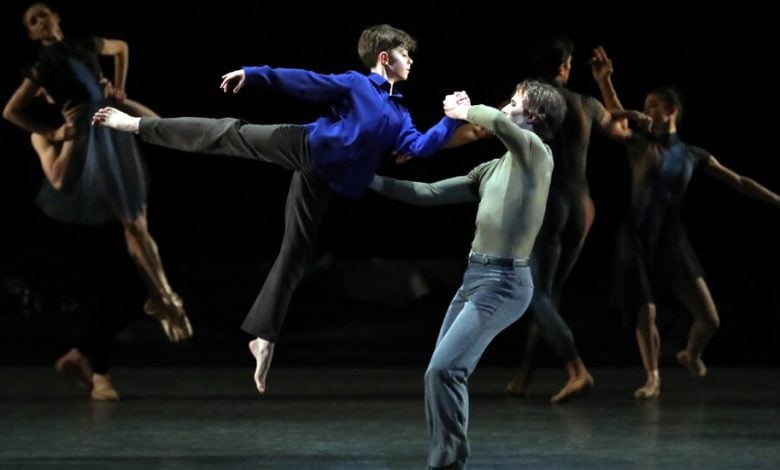At City Ballet, 2 Sparkling Premieres and Many Moments to Remember

For a company to unveil a decent new ballet is a strange and marvelous occurrence. To unveil two in one season? This is fantasy territory. Quality choreography that celebrates classicism, that highlights musicality — that even pushes the form into new realms — isn’t the norm. But at New York City Ballet this season, two premieres were worthy of many more viewings — and in the case of Alexei Ratmansky’s harrowing “Solitude,” set to Mahler, endless ones.
Inspired by a 2022 photo of a Ukrainian father kneeling before the body of his dead son, the ballet filled the stage with bodies expressing the tangible ache of grief and love. The first work Ratmansky has created as the company’s artist in residence, “Solitude” more than lives up to the promise of his appointment; it speaks to the specific union of these dancers and this choreographer — the power, in other words, that they pull out of one another.
This was also true of the season’s other premiere, “Concerto for Two Pianos” by Tiler Peck, an emerging choreographer and longtime City Ballet principal known for the way she dances not only to the music but through it. In her effervescent “Concerto,” set to music by Francis Poulenc, the dancers didn’t noodle through an approximation of balletic steps with earnest arms and wistful eyes; Peck made an honest-to-god ballet — a marriage of classical technique and musicality.
This was a relief after the winter season got off to a sludgy start: There were ballets by the company’s former leader, Peter Martins (blah), and programs that fizzled, particularly those that featured Jerome Robbins but didn’t show him at his best. The new ballets helped to lift the mood, as did the return of George Balanchine’s dazzling “Liebeslieder Walzer” and “Ballo della Regina.” Debuts — like Mary Thomas MacKinnon’s, full of force and daring in “Ballo” — made the stage pop. Here are some other moments that caught the eye.
‘Liebeslieder Walzer’

CreditCredit…via New York City Ballet
In this Balanchine classic set to Brahms — told in two parts, to Opus 52 and Opus 65 — four couples explore all facets of the waltz, with the women first in dancing heels and then in pointe shoes. Before an injury took her out of the season, Tiler Peck, partnered by the scrupulous Tyler Angle, displayed a sweeping, unselfconscious musicality seemingly driven from deep within.
